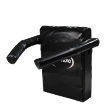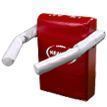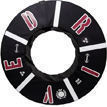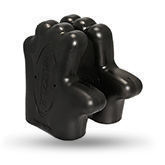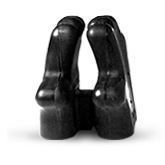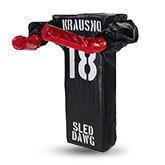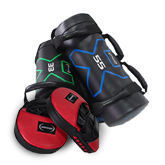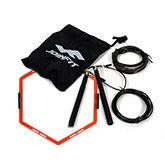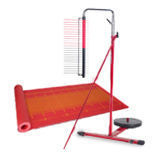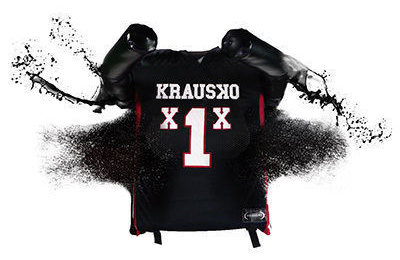Football Safety Equipment History—and Krausko’s Impact

American football has always been a contact sport. As the sport exploded in popularity and players became more and more athletic, steps needed to be taken to increase safety. While injuries were once accepted as part of the game, organized football leagues have followed a gradual progression from baggy pants and no pads to full pads and plastic helmets with facemasks. Football safety equipment history follows this basic timeline:
- 1920: The first hardened helmet and leather pads introduced
- 1930: Foam pads and facemask added
- 1940: First leather shoulder and chest pads, and chinstraps
- 1950: Helmets made with padded plastic
- 1970: Pads made with reinforced plastic
- 1975: Plastic “bird cage” facemasks introduced on plastic helmets
- 1998: Face shields introduced
- 2012: Krausko develops prototypes for safer, state-of-the-art training equipment
In the 2000s, organized football leagues—led by the NFL’s example—have experimented with many variations of facemasks and padding styles. Extensive measures have been taken to attempt to limit short and long-term injuries. Helmets are now designed to prevent concussions, full pads reduce the impact of a tackle, and Krausko training equipment helps players learn to play safely.
Proper Training Equipment Promotes Safety
Of course, player safety relies on more than simply improving the equipment they wear on their bodies. Penalties are put in place to make players behave fairly. Not only do penalties keep players from cheating, but they protect defenseless players from needless harm. Roughing the passer protects the quarterback from late or reckless hits. Defenders are penalized for unnecessary blows to the head.
Safety also depends on proper football training drills teaching efficient and sportsmanlike technique. Proper training drills require the right equipment to do the job. We offer The Muzzle to teach offensive blocking techniques.
Rock solid technique can limit illegal actions such as clipping, holding, or tripping. Therefore, the chance of injury as a result of improper contact is limited. In order to teach the right technique, coaches have traditionally taught blocking methods using static dummies and sleds in practice. We have The Colt blocking pad with arms to teach better blocking technique.
Fatigue has disastrous potential in training. When players tire, their technique and fluidity lacks, increasing the chance of injury on account of uncoordinated movements. Players can use our blocking pads without wearing pads. With less weight to carry, players can increase their reps and decrease overall fatigue.
The Best Training Equipment Prepares Players for the Real Game
 Krausko’s training system teaches legal, safe rushing and block shedding techniques better than any training equipment has before. Coaches wielding The Colt Pro naturally respond to a player’s movement. Based on the player’s technique, coaches can provide instant feedback about how well players execute drills.
Krausko’s training system teaches legal, safe rushing and block shedding techniques better than any training equipment has before. Coaches wielding The Colt Pro naturally respond to a player’s movement. Based on the player’s technique, coaches can provide instant feedback about how well players execute drills.
Our blocking pads train players the technique necessary to simulate a safe, realistic game environment. They are the next step in the evolution of football safety equipment. Krausko’s training equipment is the best on the market for youth, college, and professional football teams. Take advantage of this opportunity to improve your team and win more games!
Check out our football equipment comparison chart to see how our training system is the best for your team.
